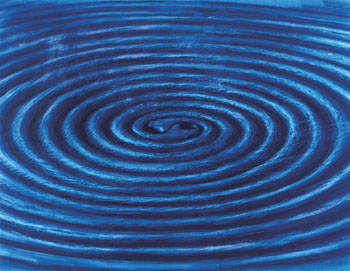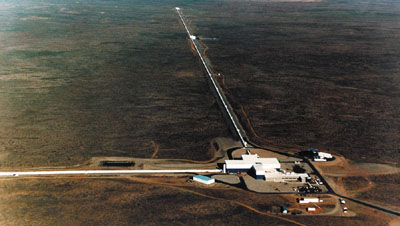The search for gravitational waves – gravitational perturbations in transit remains a major objective for the start of the next century. But with such a feeble force the waves are extremely difficult to detect amid the cacophony of noise on the Earth’s crust.

The gravitational waves emitted by accelerated masses were predicted by Albert Einstein’s General Theory of Relativity as long ago as 1916, but so far remain undetected. One piece of indirect evidence affirming their existence came in 1974 when Joseph Taylor and Russell Hulse studied PSR1913+16, a system of two compact neutron stars one of which is a detectable pulsar orbiting each other in a slowly decreasing eight-hour period. The orbital frequency acceleration was observed to be in perfect agreement with that expected from the energy loss corresponding to their calculated gravitational wave emission. For their accomplishment, Hulse and Taylor were awarded the 1993 Nobel Physics Prize.
Unfortunately these twin stars are presently emitting gravitational waves too feebly to be detectable on Earth, a condition that will continue until the end of their pas-de-deux inspiral some 350 million years hence. Still, from the density of observed binaries, a few such inspiral events are expected per century in our galaxy.
Since the theoretical prediction of gravitational waves, scientists have searched for ways of directly detecting them. To date, efforts have been unsuccessful because the extreme weakness of the postulated signals places them below the detection threshold currently available, and as yet no unexpectedly strong signal has graciously decided to assert itself.

The quest to detect gravitational waves started in earnest in 1965, with the pioneering work of J Weber on resonating bars. These are basically high-quality bells designed to be rung by transient gravitational waves. From this beginning, a small gravitational wave detection community has arisen and thrived, continuing to improve on the original idea. The main effort is directed towards noise reduction by introducing ever lower cryogenic temperature and ever more sensitive displacement sensors, to improve detector sensitivity and ultimately reveal a signal. Many more bars, progressively sophisticated, have been built. One in particular, the Explorer, has been quietly functioning at CERN since 1989.
Drawback
Despite their great potential sensitivity, the primary drawback of resonant bars is that they are, by definition, resonant. They are sensitive mainly to signals with a frequency corresponding to the bar mechanical ringing frequency, of the order of 1 kHz. A bar would respond to the hammer blow of an asymmetrical supernova explosion by simply ringing at its own bell tone, and would be excited by a twin neutron star inspiral only in that brief instant when the two stars chirp up through the bell tone frequency.
Recent advancements in laser interferometry have cleared a path to discovery with a new wide-band detection technique. This technique is capable of following a star inspiral from the time it starts generating a distinguishable signal above the clutter of gravitational noise produced by the microseismically vibrating Earth’s crust (a few Hz for inspirals in our galaxy), to the time when the two neutron stars actually merge and stop emitting gravitational waves as point-like masses (a few kHz). The whole process is calculated to last for a fraction of an hour above 5 Hz, and for only about a second above 100 Hz.
Detection would be via very long Michelson interferometers. Inside them, light is modulated by its reflections between mirrors, suspended from wires, free to be jerked by any incoming gravitational wave. The technique has initial sensitivity sufficient to reveal inspirals occurring in neighbouring galaxies, thus allowing detection of some inspiral gravitational wave signals within a physicist’s lifetime. Further advancement in lasers, mirrors, seismic isolation, and phase detection techniques must be achieved to get longer reach, up to the full potential of this technique, and reduce the expected time between detectable events to months or even days.








